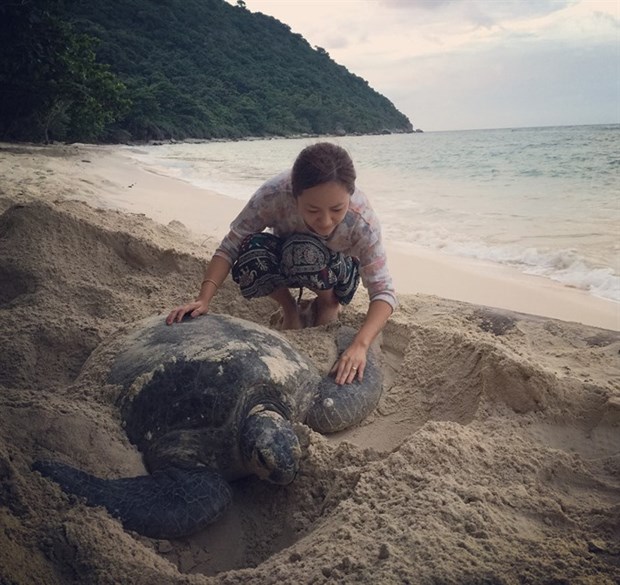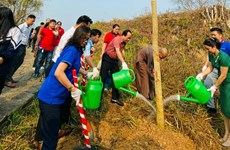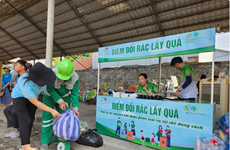Con Dao Island pioneers sea turtle protection
 A sea turtle on Con Dao Island. (Photo: VNA)
A sea turtle on Con Dao Island. (Photo: VNA)
Ba Ria-Vung Tau (VNS/VNA) - Lam Duc
Du, a forest ranger on Con Dao Island in the southern province of Ba Ria Vung Tau,
wakes up at midnight, picks up his flashlight and goes down to the beach to
collect turtle eggs.
Under a pineapple bush, a pregnant turtle is lying
in a 40cm-deep hole, dug by herself, ready to lay her eggs.
Pregnant turtles can lay about 100 eggs in two
hours, and she will dig 3-7 nests during the breeding season, which falls
between July and September.
As usual, Du waits until the turtle finishes
laying her eggs, then takes them to a facility equipped with incubators.
Baby turtles hatch after 45-60 days, but only 1 in
a 1,000 survive through to adulthood.
Du is a forest ranger whose job is to incubating
turtle eggs under a programme to conserve sea turtles in Con Dao National Park.
Statistics from the park show that about 750,000
baby turtles have been released into the sea in the past five years.
Tran Dinh Hue, deputy head of the national park,
said the park actually started protecting sea turtles in 1991. The park had installed chips to track 3,000 female
turtles so far, and around 500 females return to the island to lay eggs each
year, he said.
Hue said public awareness of turtle protection had
also risen over the years with positive results, and they had cooperated with
authorities to ensure residents did not illegally trade, transport or store sea
turtles and their products in the province.
Last year, the provincial People’s Committee
issued a message directing authorities to ensure safety in areas where sea
turtles lay their eggs in the national park.
Con Dao Island is now believed to be the largest
nesting site for sea turtles in the country.
Incomplete data from the Education for Nature — Vietnam (ENV)
released in late July said that Vietnam was home to leatherback
turtles (Dermochelys coriacea), the olive ridley sea
turtle (Lepidochelys olivacea), hawksbill turtles (Eretmochelys
imbricate), loggerhead turtles (Caretta caretta) and green
turtles (Chelonia mydas), which were all in danger due to illegally
hunting.
The centre said hawksbill turtles were the most severely depleted species because 80 percent of the population had been illegally poached for their shells, and green sea turtles face a similar situation. –VNS/VNA













